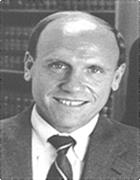
There was a time when student voice had little influence over the student learning experience. Thus, the old adage, “What do students really know anyway?” What we learned from Simon Youth Foundation (SYF) is that listening to the voice of students helps reach them where they are and across that graduation stage.
The time has never been more urgent to create alternative teaching and learning models to help at-risk high school students find their place in the world of work. Indeed, we learned from SYF that every 26 seconds a student drops out of high school. High school dropouts are 72% more likely to be unemployed than those who graduate. Dropouts earn over $10,000 less annually than the typical high school graduate. The number of high school dropouts each year, 1.2 million, exceeds the population of Rhode Island.
Today, SYF offers an encouraging antidote to these troubling trends. The graduation rate of students at SYF Academies is approximately 90%. Since 1999, over 18,000 students have earned their high school diploma at Simon Youth Academies. SYF has awarded more than $18 million in scholarships to students who go on to postsecondary education. At its core mission, SYF recognizes that at-risk students can turn their lives around and find their way to academic and career success given the right support and circumstances.
Mentorship support
As a pioneer in social and emotional learning, SYF partners with public school districts to launch Simon Youth Academies – alternative high schools primarily located in Simon malls. SYF students receive the individualized teaching and mentorship support needed to earn their diplomas. These students are typically challenged in a traditional classroom because of family circumstances, homelessness, bullying, serious illness, early parenthood, and breadwinning responsibilities. SYF Academies give students an innovative and engaging learning environment that emphasizes small class sizes led by inspirational and caring teachers.
If we can’t hear their voice or know what they want, we become a bunch of well-meaning people who are trying to do something to students and not for students. —J. Michael Durnil, president, Simon Youth Foundation
Beyond high school, SYF supports students in their pursuit of post-secondary opportunities through college and career counseling and, significantly, by providing financial support. Toward this end, SYF awards more than $1 million annually to graduating seniors in communities that are home to a Simon mall.
SYF President J. Michael Durnil put it this way: “Student voice matters to me because the student is our ‘customer.’ The student is the reason we exist and what our purpose defines us to. If we can’t hear their voice or know what they want, we become a bunch of well-meaning people who are trying to do something to students and not for students.”
The partnership between SYF and the Burlington Public School’s Evening Academy is an exemplary illustration of SYF’s significant real world impact. Burlington Public Schools Superintendent (and Massachusetts Association of School Superintendents President) Eric Conti shared this perspective: “The partnership between the Simon Youth Foundation (SYF) and the Burlington Public School’s Evening Academy was officially formed three years ago. Students are required to work full time and to attend classes four nights per week. The Evening Academy’s objective is to take these students over the finish line to a diploma.”
“Our partnership with SYF has allowed us to re-establish high school experiences and supports that provide a future-orientation – a perspective often taken for granted by traditional students and missing from our at-risk population. Scholarships, field trips, social supports, learning supports, personal relationships, recognitions, internships are built-in features of most high schools. All of these opportunities would not have been possible without the support of the Simon Youth Foundation.”
Student feedback
Recognizing the importance of a systemic and qualitative approach to gathering student data, SYF turned to the Center for Effective Philanthropy to identify the right partner and tool to accomplish this objective. Through a partnership with national nonprofit YouthTruth and its nationally recognized Student Survey, SYF is able to gather student feedback and leverage the results to inform strategy and make programmatic changes and improvements.
In addition, each Academy engages with a local set of student voice feedback data. By way of illustrative example, Simon Youth Rose Tree Media Academy in Pennsylvania strengthened academic rigor and peer relationships. In a comparable school setting, Simon Youth Academy at Circle Centre Mall in Indianapolis deploys student voice to inform the creation of enhanced advisory programs to grow relationships between teachers and students.
No one is more powerfully equipped to speak for the Simon Youth Academy experience than the students and faculty themselves.
“This was the first time I could connect with other students who had the same problems I did with no judgment. For once, I’m proud to tell my parents the grades I have, and I have finally started to pass my classes. This school has an environment that I really enjoy, and it helps me concentrate on what’s really important.” 11th Grader, Simon Youth Academy at Valley Vista (Fountain Valley, CA)
The inviting and supportive spirit of SYF teachers shines through in the webpage of Jannice Clark, mathematics teacher at Simon Youth Kelley Academy at Lincoln Park Center:
“I am so happy to be a part of your educational journey and want you to know that this is the beginning of anything you want.”
SYF President Durnil shared this final reflection, “As a foundation, we sit in a unique space within the education community, the corporate world, and the philanthropic sector, and we thus have to bring something unique to the table. We know the work of the foundation is to engage the disenfranchised. The students who we work with are often on the margins, and it is so critical to hear what they need and make sure that we can advocate for that.”
James E. Samels is president and CEO of The Education Alliance and senior partner in the law firm of Samels Associates, Attorneys at Law






